Gallery
- A tram in Bedford Street near the Ulster Hall circa 1890.
- The Albert Clock in 1901 with horse trams.
- The Albert Clock with electric trams edited onto the previous picture with horse trams.
- A steam tram on the Antrim Road.
| Belfast Street Tramways | |
|---|---|
| Operation | |
| Locale | Belfast |
| Open | 28 August 1872 |
| Close | 1 January 1905 |
| Status | Closed |
| Infrastructure | |
| Track gauge | 1,435 mm (4 ft 8+1⁄2 in) and 5 ft 3 in (1,600 mm) |
| Propulsion system(s) | Horse |
| Statistics | |
| Route length | 24.95 miles (40.15 km) |
The Belfast Street Tramways operated horse-drawn tramway services in Belfast from 1872 to 1905. [1] Its lines later formed a major part of the Belfast Corporation Tramways.
The initial tramway services were constructed by the Belfast Tramways Company.
On 10 August 1872 they were taken over by the Belfast Street Tramways Company. The initial track gauge was 5 ft 3 in (1,600 mm). [2] The depots were on Sandy Row, Lisburn Road, Mount Pottinger, Knock, Antrim Road and Falls Road.
On 30 June 1877 a Henry Hughes and Company steam tram engine "The Pioneer" was tried on the Belfast system. Despite the trial proving successful with no smoke or noise emitted and no horses being frightened, official permission to operate steam services was not forthcoming.
On 29 November 1877 the company promoted the bill to revise the track gauge to 1,435 mm (4 ft 8+1⁄2 in). The bill was passed in 1878 but the clauses to allow steam working were removed because of objections from John Freeman-Mitford, 1st Earl of Redesdale.
This independent company built a line from Old Holywood Road, Belmont to connect with Belfast Street Tramways on the Newtownards Road. The company leased tramcars and staff from the Belfast Street Tramways Company.
In 1902 the company was purchased by the Belfast Street Tramways Company.
This independent company built a line from Ligoniel to connect with the Belfast Street Tramways at the Brookfield Street, Crumlin Road intersection. Services started on 24 April 1893.
In 1902 the company was purchased by the Belfast Street Tramways Company.
The Belfast and County Down Railway constructed this 111 yards (101 m) line to connect Belfast Queen's Quay railway station to the Belfast Street Tramways line near Queen's Bridge. The tramcars on this line were operated by the Belfast Street Tramways Company.
This line was purchased by Belfast Corporation in 1902.
The company was purchased by Belfast Corporation on 1 January 1905, comprising 171 tramcars, 2 horse buses, and 4 water trams.
The corporation undertook a programme of modernisation and electrification, and services continued as Belfast Corporation Tramways.
Tramcar 118 survived and has been restored and is now on view at the Ulster Folk and Transport Museum, Cultra.
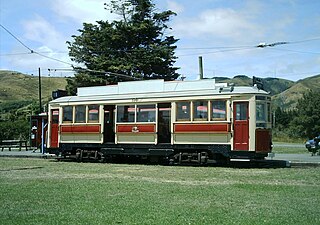
The Wellington tramway system (1878–1964) operated in Wellington, the capital of New Zealand. The tramways were originally owned by a private company, but were purchased by the city and formed a major part of the city's transport system. Historically, it was an extensive network, with steam and horse trams from 1878 and then electric trams ran from 1904 to 1964, when the last line from Thorndon to Newtown was replaced by buses.

Nottingham and District Tramways Company Limited was a tramway operator from 1875 to 1897 based in Nottingham in the United Kingdom.

Sheffield Tramway was an extensive tramway network serving the English city of Sheffield and its suburbs.

The City of Birmingham Tramways Company Ltd operated trams in Birmingham, England, from 1896 until 1911.

Dundee Corporation Tramways formerly served the City of Dundee in Scotland. The corporation had financed the construction of a horse tramway in 1877, but had then leased it to the Dundee and District Tramways Company. They had replaced most of the horse trams with steam tram locomotives pulling trailer cars from 1884, but in 1897 the corporation decided that it would run the tramway system itself. After some negotiation and the payment of compensation, they took over the system in 1899, with a view to electrifying it. Electric trams started running in 1900, and the changeover was completed in 1902.

Belfast Corporation Tramways was an operator of tram, trolleybus and bus services in Belfast from 1905 to 1973.

Between 1901 and 1949 Manchester Corporation Tramways was the municipal operator of electric tram services in Manchester, England. At its peak in 1928, the organisation carried 328 million passengers on 953 trams, via 46 routes, along 292 miles (470 km) of track.
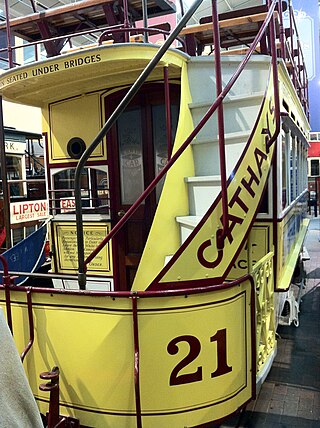
Cardiff Tramways Company operated a horse tramway service in Cardiff between 1872 and 1902.

Gloucester Corporation Tramways operated an electric tramway service in Gloucester between 1904 and 1933.

Tramways in Exeter were operated between 1882 and 1931. The first horse-drawn trams were operated by the Exeter Tramway Company but in 1904 the Exeter Corporation took over. They closed the old network and replaced it with a new one powered by electricity.

Dundee and District Tramways operated a tramway service in Dundee between 1877 and 1899.
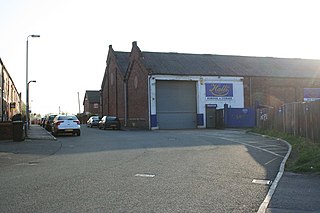
Wigan Corporation Tramways operated a tramway service in Wigan, England, between 1901 and 1931. The first tramway service in the town was run by the Wigan Tramways Company, whose horse trams began carrying passengers in 1880. They began replacing horses with steam tram locomotives from 1882, but the company failed in 1890 when a Receiver was appointed to manage it. The Wigan & District Tramways Company took over the system in 1893 and ran it until 1902. Meanwhile, Wigan Corporation were planning their own tramway system, obtaining an authorising act of Parliament in 1893, and a second act of Parliament in 1898. This enabled them to build electric tramways, and in 1902, they took over the lines of the Wigan & District Tramways Company.
At the peak of Britain’s first-generation tramways, it was possible to travel by tram all the way from Pier Head at Liverpool to the Pennines in Rochdale by tram.
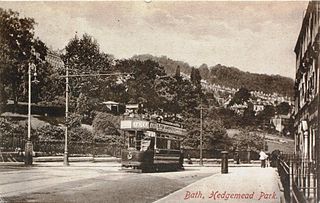
Bath Tramways Company and its successors operated a 4 ft horse-drawn tramway service in Bath between 1880 and 1902. From 1903 until its closure in 1939 an expanded route carried electric trams operated by Bath Electric Tramways Company.
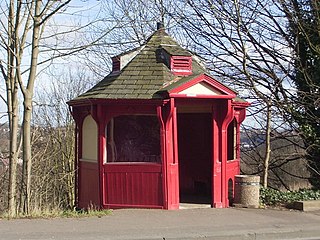
Huddersfield Corporation Tramways operated a tramway service in Huddersfield, England, between 1883 and 1940. It initially used steam locomotives pulling unpowered tramcars, but as the system was expanded, a decision was taken to change to electric traction in 1900, and the first electric trams began operating in February 1901. The system was built to the unusual gauge of 4 ft 7+3⁄4 in, in the hope that coal wagon from neighbouring coal tramways, which used that gauge, could be moved around the system. This did not occur, but two coal trams were used to delivered coal to three mills.
Wolverhampton Tramways Company operated a tramway service in Wolverhampton between 1878 and 1900.
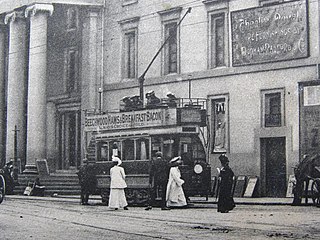
The tramways in Plymouth were originally constructed as four independent networks operated by three different companies to serve the adjacent towns of Plymouth, Stonehouse and Devonport in Devon, England. The merger of the 'Three Towns' into the new borough of Plymouth in 1914 was the catalyst for the three companies to join up under the auspices of the new Plymouth Corporation. The network was closed in 1945, partly as a result of bomb damage during World War II.
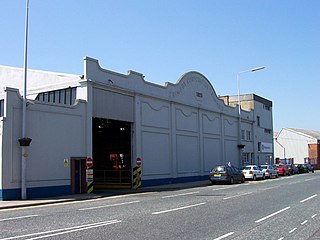
The Great Grimsby Street Tramways Company was a tramway serving Grimsby and Cleethorpes in Lincolnshire, England. It was a subsidiary of The Provincial Tramways Company. They opened a horse tramway in 1881, running from the Wheatsheaf Inn in Bargate to the border with Cleethorpes, with a branch along Freeman Street, and extended the line into Cleethorpes in 1887. It followed the trend of many British systems, and was converted to an electric tramway in December 1901. Small extensions were made to the system at both ends, but the basic plan of the system remained the same throughout its life.
Bradford Corporation Tramways were a tramway network in the city of Bradford, West Riding of Yorkshire, England which operated trams from 1882 until 1950 and trolleybuses from 1911 until 1972. The track gauge of the tramways was 4 ft.

Stockport Corporation Tramways operated a tramway service in Stockport, England, between 1901 and 1951. It was preceded by a horse tramway from Levenshulme to Stockport, which opened in 1880, and was ultimately run by the Manchester Carriage and Tramways Company. A second independent horse tramway opened in 1890, running to Hazel Grove. In 1899 the Corporation bought the first line, electrified it, and leased it back to the operating company. Their powers to buy the Stockport and Hazel Grove Tramway, authorised by the same Act of Parliament, were not exercised until 1905.